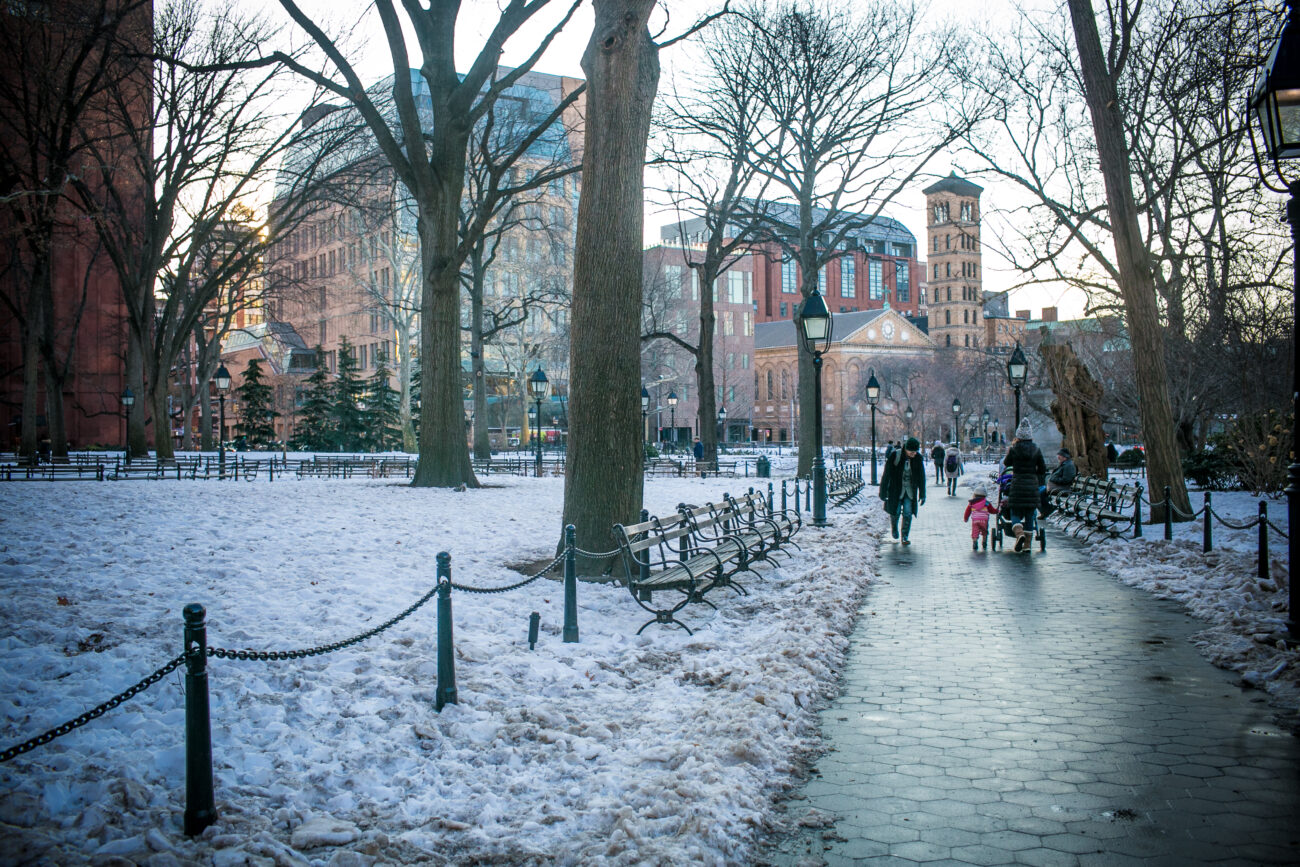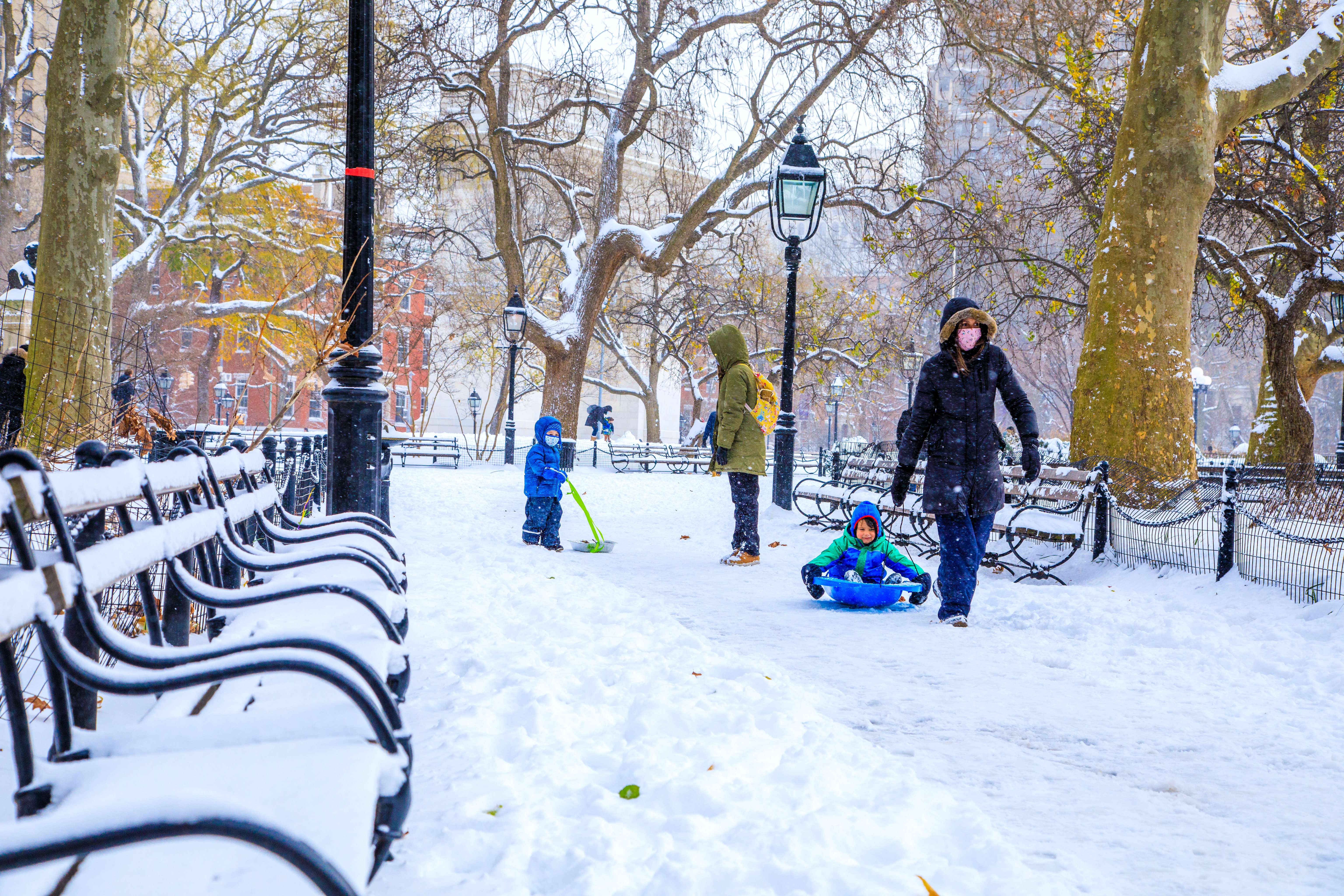Winter is Coming

Winter isn’t just coming, it’s here! As the season transitions from the busier warm months to a quieter cold period, it’s important to prepare the Park for winter and so the hardworking staff embarks on a comprehensive “winterization” effort. So just what is winterization? Winterization is the term NYC Parks uses to refer to the physical changes that are made as well as changes to the Park’s day-to-day operations to prepare the staff, landscape, and hardscapes for the new challenges that winter can bring.
The landscapes team typically kicks off the process. They work closely with a contracted irrigation vendor to clear all the water from the entire system so there’s none left in the jets or hosing that can freeze and rupture the lines. In order to clear them, a compressor truck comes in to blow air through every pipe and hose throughout the park. Fun fact: if you’ve ever been walking around in mid-fall and randomly see misty bursts of sprinklers going off it’s actually the irrigation system being cleared!
The irrigation system isn’t the only set of pipes that needs clearing, so NYC Parks plumbers make a trip out to turn off WSP’s other systems at the end of each season. That includes the fountains in the dog runs, drinking fountains, the sprinklers in the playgrounds, and the world famous fountain. These features go through the same kind of winterizing process as the irrigation system. The lines, pipes, and tanks are drained so there’s no remaining water to freeze and expand which could cause ruptures and significant damage In addition to the water, the lights in the middle of the fountain also get turned off for the winter. They’re made to be submerged in water and burn out quickly if they run in open air.

The landscapes team is also responsible for raking and mulching the many leaves of WSP as they fall. Between the landscapes team and the Park’s wonderful volunteers, the lawns are regularly cleared of leaf drop during this period so the lawns don’t suffocate over winter. But those crunchy piles don’t go to waste! Washington Square Park recycles them into mulch, which protects the soil in the garden beds along with providing other ecological benefits. Even before they are mulched, decomposing leaves release nutrients that benefit the soil as they deteriorate over the winter months. The smaller, finer mulched leaves offer those same nutrients but decompose at a faster rate while also providing a softer blanket than whole leaves, which is gentler on delicate and smaller plant growth.
Winter is also the perfect time for a major pest remediation push. The Conservancy is proud to fund a fully pesticide-free method of pest control in Washington Square Park that is safer for both local wildlife and pets. It’s called a Burrow RX machine, and it targets rodents underground in their burrows with carbon monoxide. The sparser landscapes of winter make it easier to see burrow entrances, particularly since any smoke trickling to the surface is visible in the cold air, hinting at further holes.
It isn’t just the landscapes team that works on winterizing tasks. On the maintenance and operations front, staff rotate equipment from the summer roster of mowers, seed spreaders, and aerators to colder weather tools such as salt spreaders, snow blowers, and plows. Everything is tested early so necessary repairs can be made to ensure everything is ready for the first big snow. In addition to our smaller equipment such as hand-operated salt spreaders and snow blowers, we have snow chains and a plow attachment that allows the gardeners to transform the John Deere tractor into a snow plow for the season! With last year’s purchase of an additional tractor and gator fitted with snow plows, Washington Square Park is home to quite an impressive fleet that allows for rapid snow management. Very important for a high-traffic priority park like this one.

Park staff will focus first on clearing the most heavily-used portions of the park so they remain accessible. They start with a nice sprinkle of salt early before the snow begins. The salt has the potential to damage the garden beds and tree pits, so WSP’s salt spreaders are calibrated to cover as much of the pathway in one pass as possible without spillover into the beds or lawns. Next is plowing. The perimeter of the park is tackled first since it’s the most heavily trafficked then a pathway is cleared through the center of the Park. The plows are seriously strong equipment and can take out a bench or fence, so by keeping to the center of the pathways staff minimize the opportunities for damage. This method also leaves enough untouched snow to have some wintery fun! The final step once the plow is done is to lay another layer of salt to prevent the cleared pathways from icing over.
When the weather event is over the real fun starts. It’s so wonderful seeing people playing safely in the snow and enjoying being outdoors in the park. To make sure things stay fun and safe, the staff monitors the remaining ice and snow until it melts completely away. More salt is spread as necessary to prevent ice from forming, and the drains are checked to be sure they can handle the runoff.
Always remember to dress warmly, wear shoes with traction, and bring gloves for some snowy fun when visiting the park after a winter storm. Keep in mind that the hours at the comfort station shorten to 8am-4pm as the daylight hours are limited and seasonal staff are not present to maintain them. And always remember proper snow-sculpture building protocol: a strong base is crucial to a long-lasting work of winter art. The park can be a wintery wonderland this time of year and we look forward to seeing you here next time we get a fresh dusting!

